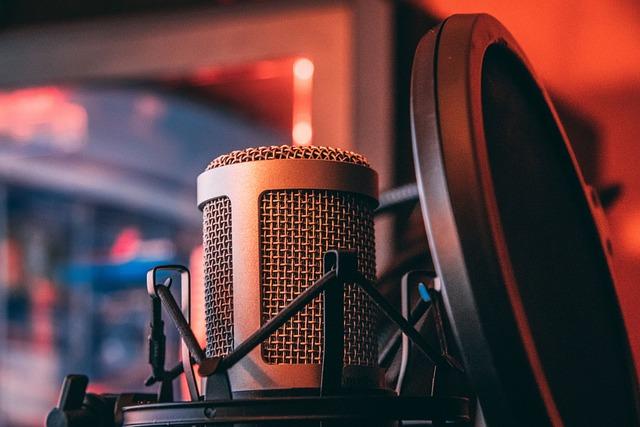In a world where silence reigns supreme, every whisper, footstep, and rustle becomes a harbinger of danger. “A Quiet Place,” the groundbreaking thriller, masterfully transforms the absence of sound into a tool of suspense, weaving an intricate tapestry of tension that grips audiences from start to finish. This article delves into the film’s ingenious use of sound design, exploring how the meticulous orchestration of silence and noise crafts an atmosphere of palpable dread. Through the lens of this cinematic marvel, we uncover the secrets behind its ability to keep viewers on the edge of their seats, proving that sometimes, silence speaks volumes.
Crafting Silence: The Art of Minimal Soundscapes
In the realm of film, silence often speaks louder than words, and A Quiet Place masterfully illustrates this through its innovative sound design. By stripping away the cacophony typical of horror films, the movie crafts an atmosphere where every whisper and creak becomes a harbinger of doom. The strategic use of minimal soundscapes creates a heightened sense of tension, drawing the audience into a world where silence is not just golden, but essential for survival.
- Subtle Layers: The sound design employs barely audible layers, like distant wind or the rustle of leaves, to maintain a constant undercurrent of unease.
- Silence as a Character: The absence of sound becomes a living entity, shaping the narrative and influencing the characters’ actions.
- Dynamic Contrasts: Moments of silence are punctuated by sudden, jarring noises, creating an emotional rollercoaster that keeps viewers on edge.
These elements together make silence the film’s most powerful tool, transforming quiet moments into a symphony of suspense and fear.

Subtle Echoes: Layering Audio to Heighten Suspense
In the silent world of A Quiet Place, sound design takes center stage, weaving a tapestry of tension through the careful layering of audio elements. The filmmakers masterfully manipulate subtle echoes and ambient sounds to draw viewers into a heightened state of suspense. By employing a blend of naturalistic noises and minimalist soundscapes, they create a haunting atmosphere where every sound feels both intimate and ominous.
- Ambient Noise: The use of faint rustling leaves and distant animal calls fills the silence, reminding us of the lurking danger.
- Echoing Footsteps: Each step resonates, amplifying the tension as characters navigate their precarious world.
- Barely Audible Breaths: These subtle sounds highlight the fragility of human life in a landscape dominated by silence.
By layering these elements, the film crafts a soundscape that heightens suspense, turning the absence of dialogue into a powerful narrative tool. The result is an auditory experience that keeps audiences on edge, listening intently for the next quiet threat.

The Power of Absence: Silence as a Character
In A Quiet Place, silence takes on a life of its own, becoming an essential character that drives the narrative. The film’s sound design masterfully uses the absence of sound to create a world where every whisper, every creak, and every breath carries monumental weight. The strategic use of silence builds an atmosphere thick with tension, compelling the audience to lean in, to listen more closely, and to anticipate the unknown.
- Suspenseful Atmosphere: The lack of ambient noise intensifies the film’s suspense, transforming the ordinary into the extraordinary.
- Heightened Awareness: Viewers become acutely aware of even the faintest sounds, sharing the characters’ heightened senses and constant vigilance.
- Emotional Resonance: Silence amplifies the emotional stakes, allowing the characters’ struggles and fears to resonate more profoundly with the audience.
By embracing silence, A Quiet Place not only crafts a gripping thriller but also explores the profound impact of sound—or the lack thereof—on human experience.

Precision in Sound: Techniques for Creating Tension
In the realm of sound design, precision is key to crafting a world that grips the audience with palpable tension. “A Quiet Place” serves as a masterclass in using sound to evoke suspense and unease. The film’s soundscape is meticulously constructed, transforming ordinary noises into harbingers of danger.
- Selective Silence: By stripping away ambient sounds, the filmmakers heighten the impact of every footstep and breath. This strategic absence of noise makes each sound that does emerge feel crucial and fraught with risk.
- Contrasting Dynamics: The interplay between silence and sudden, jarring sounds creates a rhythm that keeps the audience on edge. Soft whispers followed by abrupt crashes exploit the audience’s anticipation, turning every quiet moment into a potential threat.
- Diegetic Focus: Emphasizing sounds that exist within the story’s world, like rustling leaves or creaking floorboards, enhances realism and immerses viewers in the characters’ fragile existence.
Through these techniques, the film crafts a haunting auditory experience, where every sound could spell doom, keeping the audience perpetually on the brink of suspense.

